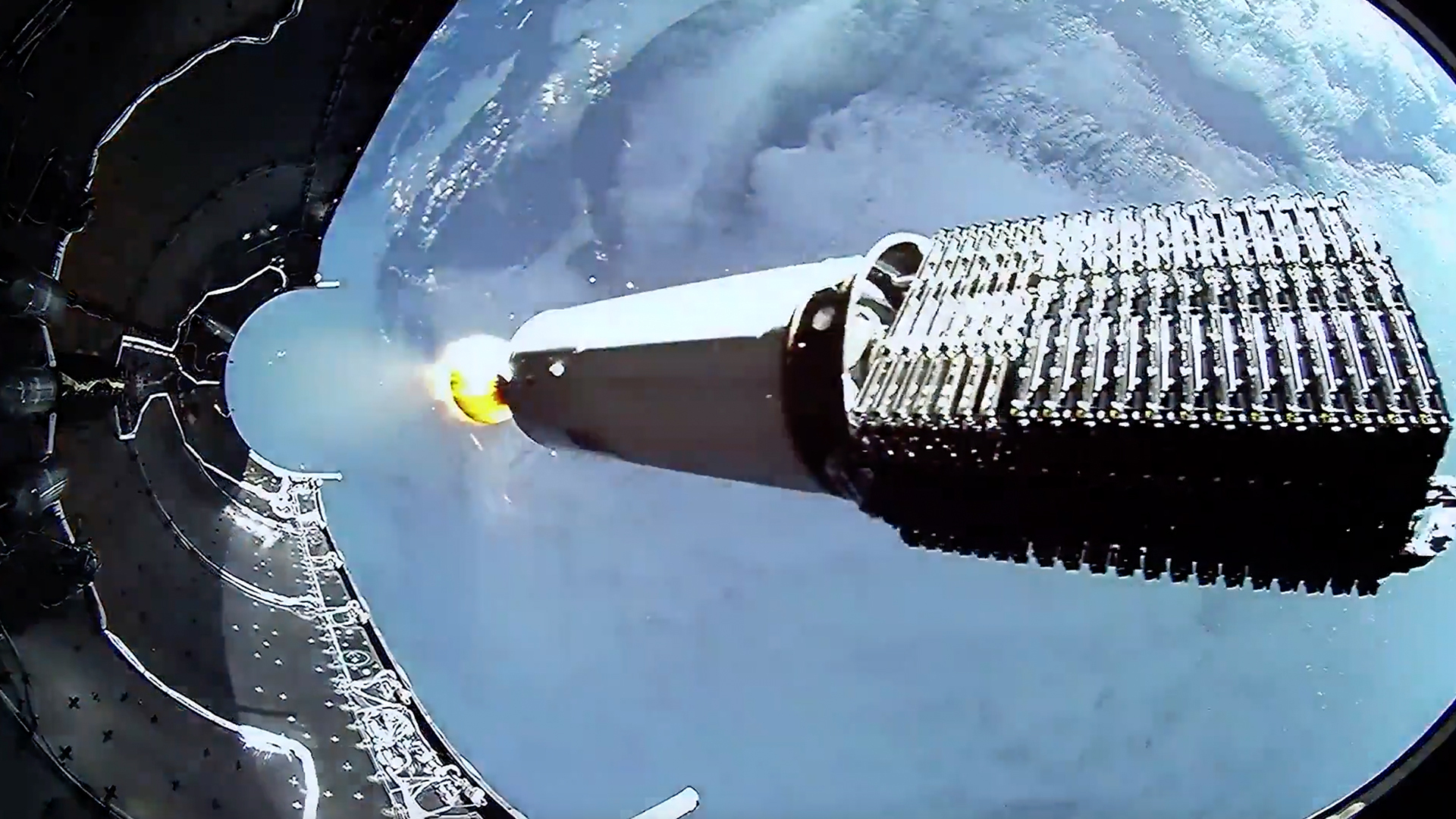
A spectacular new video shows a set of SpaceX satellites ready to deploy into space.
SpaceX's in-space video shows a stacked group of Starlink satellites being revealed after two pieces of protective hardware, known as payload fairings, fall away from the Falcon 9 rocket that launched the group.
"View from the active and passive halves of a payload fairing during a recent Falcon 9 launch of @Starlink," SpaceX officials wrote on X, formerly Twitter on Monday (Oct. 21). The company did not say which launch the footage was from.

Related: SpaceX launches 100th rocket of 2024 during Starlink doubleheader (video, photos)
Starlink is a massive constellation of broadband Internet satellites, and SpaceX hopes to have quite a number in low Earth orbit to serve customers in rural or underserved areas: their plans call for as many as 42,000 satellites. The company has also provided humanitarian assistance with the satellites worldwide during conflicts or following natural disasters, including in the American southeast after the catastrophic Hurricane Helene last month.
So far, the megaconstellation includes more than 6,400 active spacecraft, according to astrophysicist and satellite tracker Jonathan McDowell. The current generation of Starlink, called V2, is roughly 1,760 lbs (800 kilograms) at launch.
Over the years, astronomers have raised concerns about the effects of Starlink on the night sky. SpaceX says it has made efforts to darken individual satellites, but the Starlink train of satellites is still highly visible after launch and in orbit.
More recently, a new study published in the journal Astronomy & Astrophysics on Sept. 18 found that radio noise from the new generation of Starlink satellites are 32 times stronger than the previous set.
The emissions interfere with studies of the early universe and the Big Bang, the researchers argued. SpaceX launches Starlinks frequently, often multiple times a week, and individual satellites are rated to last up to five years.







